The Taj Mahal is an absolutely unique pearl of India and a true symbol of the love of the Great Mughal Emperor Shah Jahan for a woman named Mumtaz Mahal, who was able to conquer his heart forever. Legend has it that Shah Jahan met a young girl in the market and was so dazzled by her beauty that he decided to make her his third wife and never part with her again. According to various sources, Mumtaz Mahal died during the fourteenth childbirth.
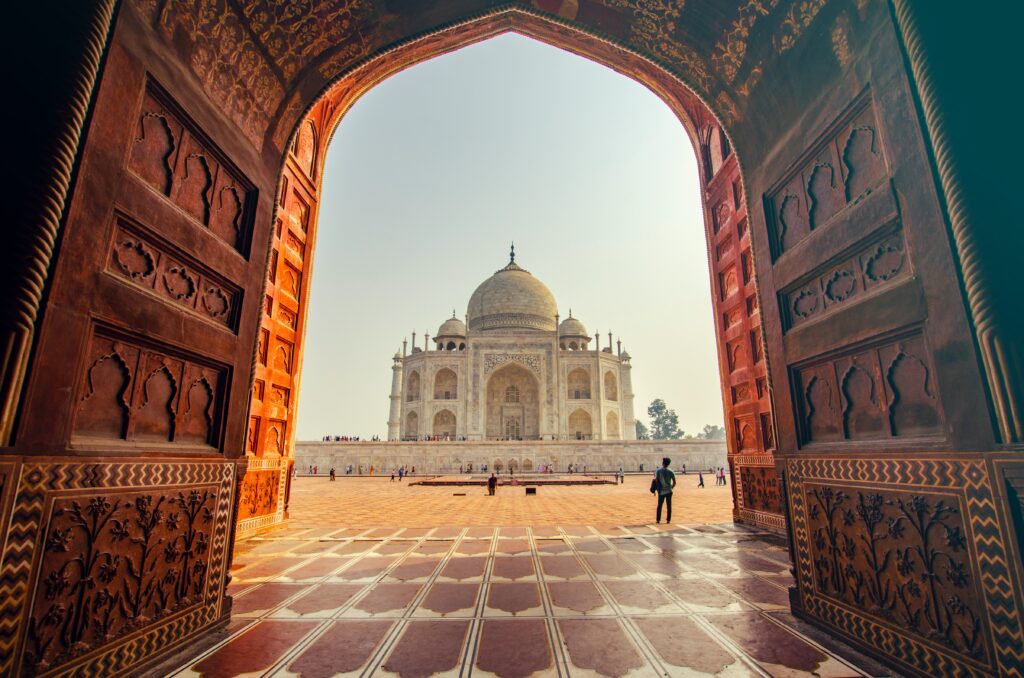
However, there is a version that previously the third wife of the Mughal ruler became seriously ill. Nevertheless, the fact of the Padishah’s love for his beloved and his relentless longing for the loss of his beloved woman are undeniable.
Historical sources claim that after the death of his beloved, Shah Jahan spent seven days in his chambers, after which, according to the statements of witnesses, he changed greatly, turning gray and aged outwardly for many years. As a result of the shock he suffered, the Padishah ordered him to perpetuate his memory and love for his beloved wife forever by building a grand mausoleum.
By the way, the very name of the Taj Mahal translates as, “The Pride of the Palace.” This is what the ruler called his beloved during his lifetime.
Individual features of the architecture of the Taj Mahal
Despite all the grandeur of the Taj Mahal attraction, until today it is not known exactly who participated in its creation. According to some sources, the creator of the mausoleum is Shah-Jihan himself.
According to other sources, the main designer of the complex is none other than the Turk Isa Mohammed Efendi. But who participated in the construction does not matter as much as the result of the construction. For the construction of which, white marble was chosen to emphasize the purity of the soul of Mumtaz Mahal. And to convey the amazing beauty of the beloved Padishah. It was ordered to decorate the walls of the tomb with a mass of precious stones stacked in extraordinary pictures.
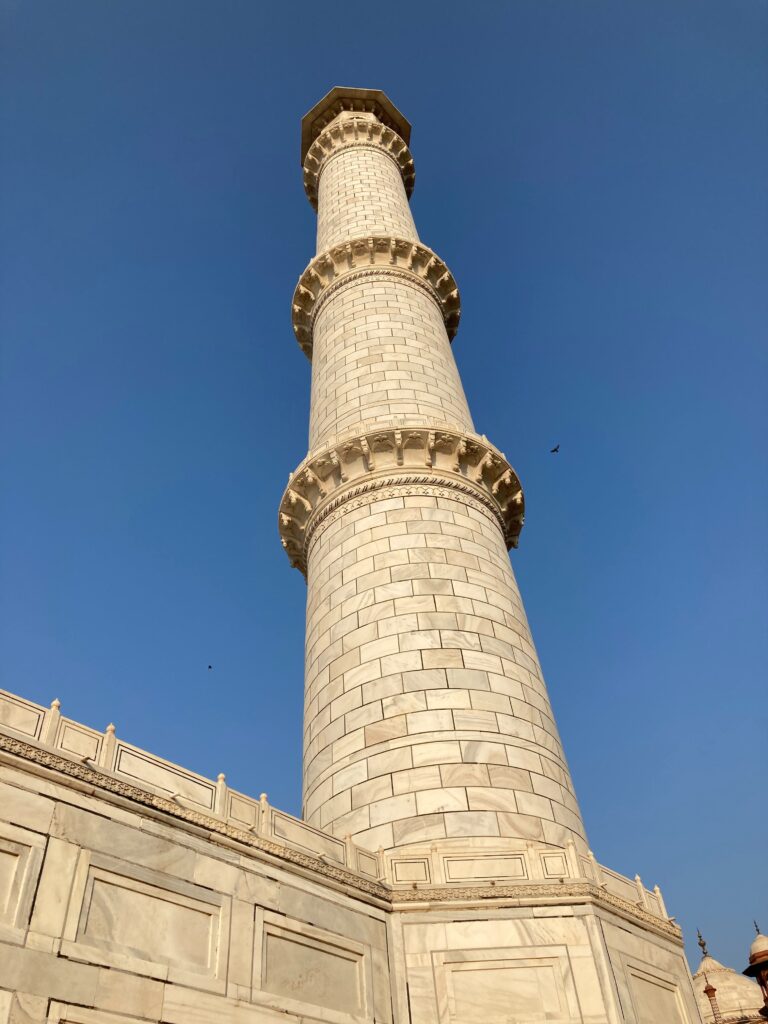
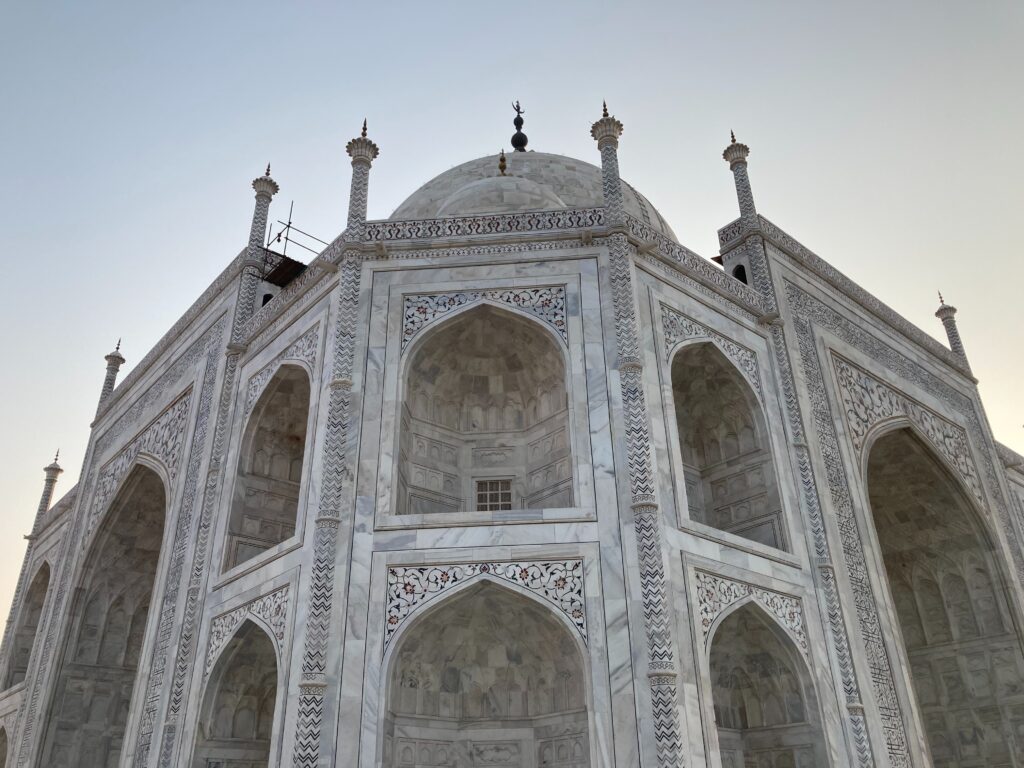
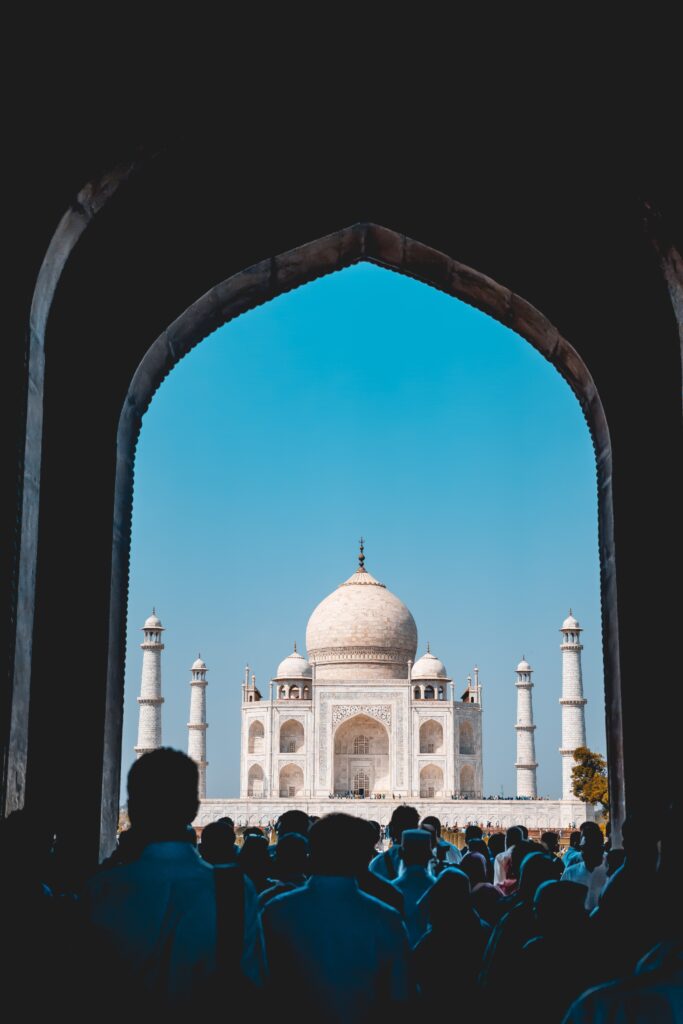
In the architecture of the erected mausoleum, there is an intersection of several styles, among which one can see the peculiarities of the manifestation of Islamic, Persian trends and notes from Central Asia.
The main distinctive details of the complex include:
- The presence of a chess floor inside the complex;
- Forty-meter minarets;
- Memorable dome of the building.
An important and interesting feature of the Taj Mahal is also the manifestation of optical illusions. For example, inscriptions taken from the Koran and written along the arches of the mausoleum have the appearance of the same size. But the distance of the letters between each other and their size is many times larger.
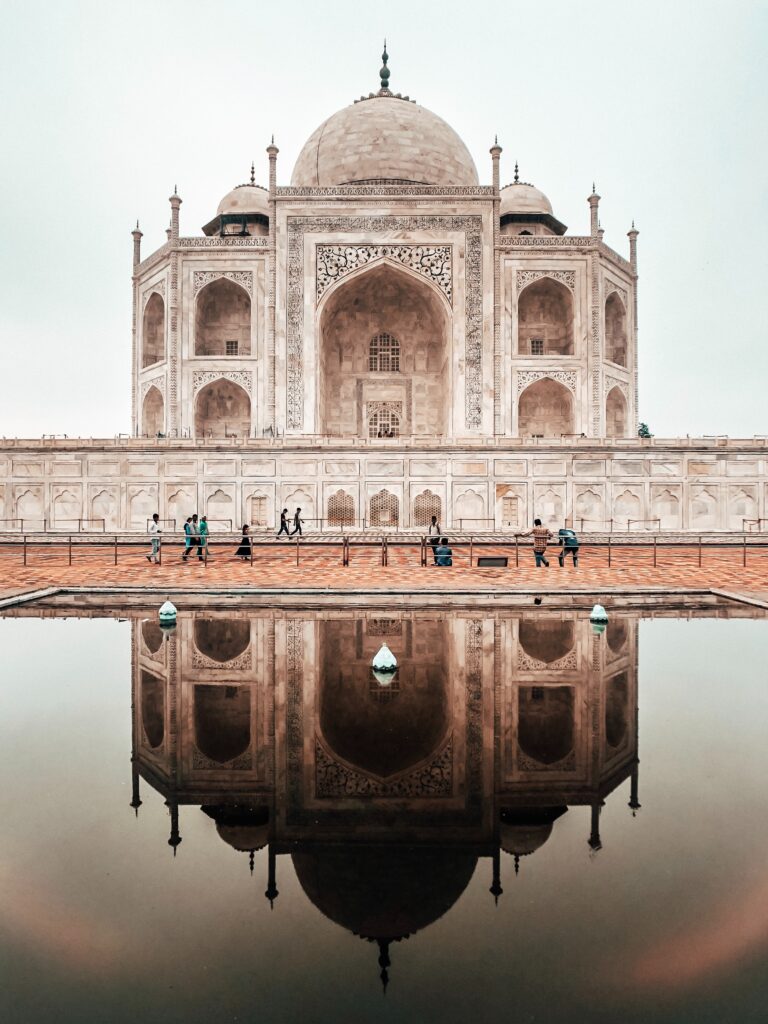
Another significant feature of the Taj Mahal is its unique ability to change color. And this factor depends on the time of day. The secret of this phenomenon lies in the translucent marble from which the complex is built. During the day, the mausoleum appears white, under the moonlight, it acquires a silvery hue, and at sunset, it has a pinkish tinge.
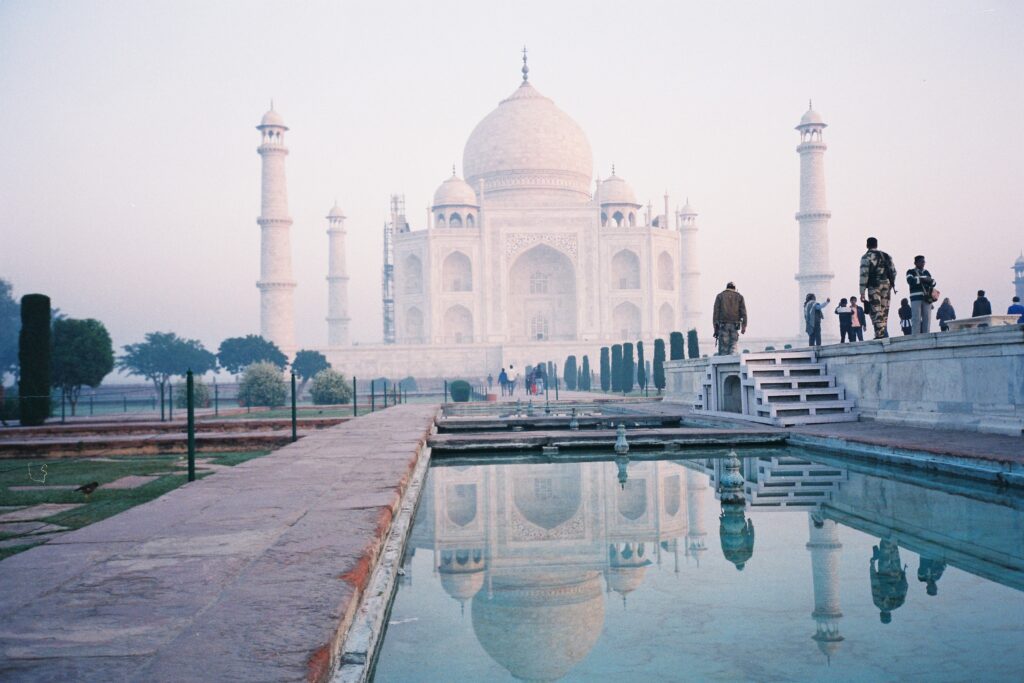
The image of flowers is a common thing in the architecture of Islam. However, a monument lined with mosaics deserves special attention.
Interesting historical facts
Legend has it that after the construction of the mausoleum was completed, Shah Jahan ordered the masters to be blinded, as well as to deprive them of their hands, to prevent attempts to reproduce such a creation. Many people of those times often used such methods, however, it is assumed that this is still just a legend, and the emperor only fixed on paper confirmation that the masters would not create a similar masterpiece.
There is a version according to which the mausoleum has a chance to collapse because of the Jamna River, which gradually grows noticeably smaller every year. Not so long ago, cracks were found on the walls of the building, but this is not proof that the cause lies solely in the river. And the causes of such phenomena are rather environmental factors.










